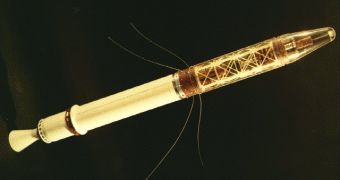Fifty years have passed since the launch of the third artificial satellite into space, and the first ever American satellite. Commonly known as the Explorer-1 program, the satellite 1958 Alpha liftoff from Cape Canaveral Air Force State on January 31st, 1958, thus announcing the beginning of a long series of space launches of the United States.
The program started in the wake of the launch of the two soviet satellites, Sputnik 1 and 2, that triggered the so-called Sputnik crisis. Explorer-1 was to be the second satellite launched into space to carry a payload, after the soviet Sputnik 2. The satellite was lifted into Earth's orbit with the help of a Juno I rocket, while the payload of the satellite had been designed and built by Dr. James Van Allen of the University of Iowa.
It made a complete rotation around the Earth every 114.8 minutes, meaning it could complete 12.54 orbits per day. Its elliptical trajectory took it from an altitude of 360 kilometers up to 2.520 kilometers from the surface of the Earth. The payload it carried consisted of a few instruments, such as a Geiger counter, which measured the level of radiation outside the planet's atmosphere, temperature sensors and a microphone used to detect impacts produced by micrometeorites.
Due to the fact that it had an elliptical orbit, the Explorer-1 satellite could vary the distance from the Earth by a ratio of 1 to 7, which led to the discovery of the Van Allen Radiation belt. The Van Allen Radiation belt represents a strip of space located between 200 to 1,000 kilometers above the surface of the planet, consisting mostly of charged particles held into place by the Earth's magnetic field. However, this radiation torus cannot extend into space further than 7 planetary radii. A second radiation belt has been discovered later on, albeit it has greater intensity between 23,300 to 30,600 kilometers above the surface of the Earth.
Eventually, after about four months of making measurements in the Earth's orbit, the Explorer-1 spacecraft failed due to power supply shortage. Its nickel-cadmium batteries, forming a high source of power that was designed to work for a month, and a second low power source that should have provided power for an additional 105 days stopped working on March 23rd, 1958.
As it floated through space, the Explorer-1 lifeless spacecraft slowly decayed its orbit and after twelve years since it was launched, it collided with Earth's atmosphere and executed a re-entry on March 31st, 1970, burning as it passed over the regions of the Pacific Ocean, after completing more than 58,000 orbits.

 14 DAY TRIAL //
14 DAY TRIAL //